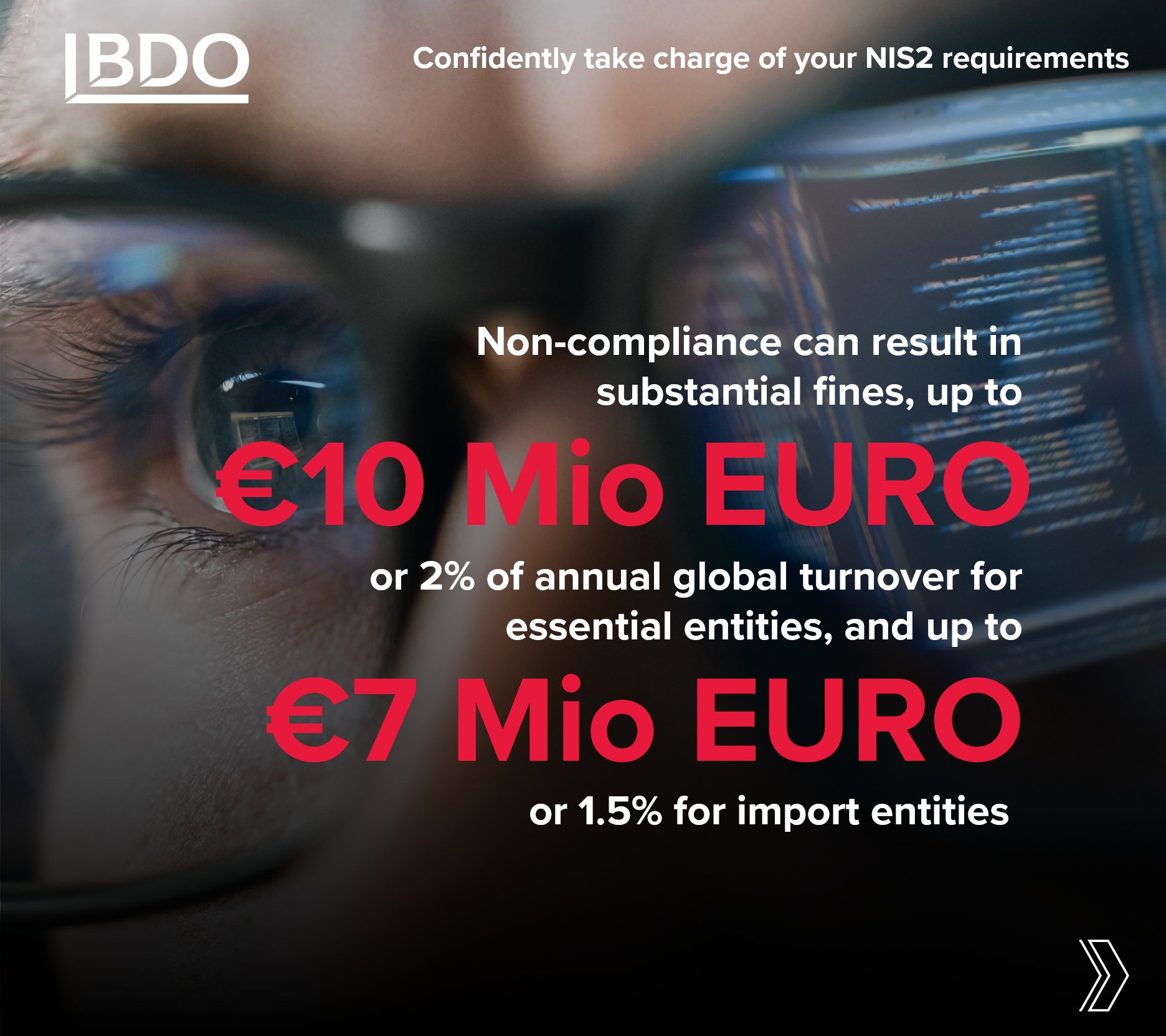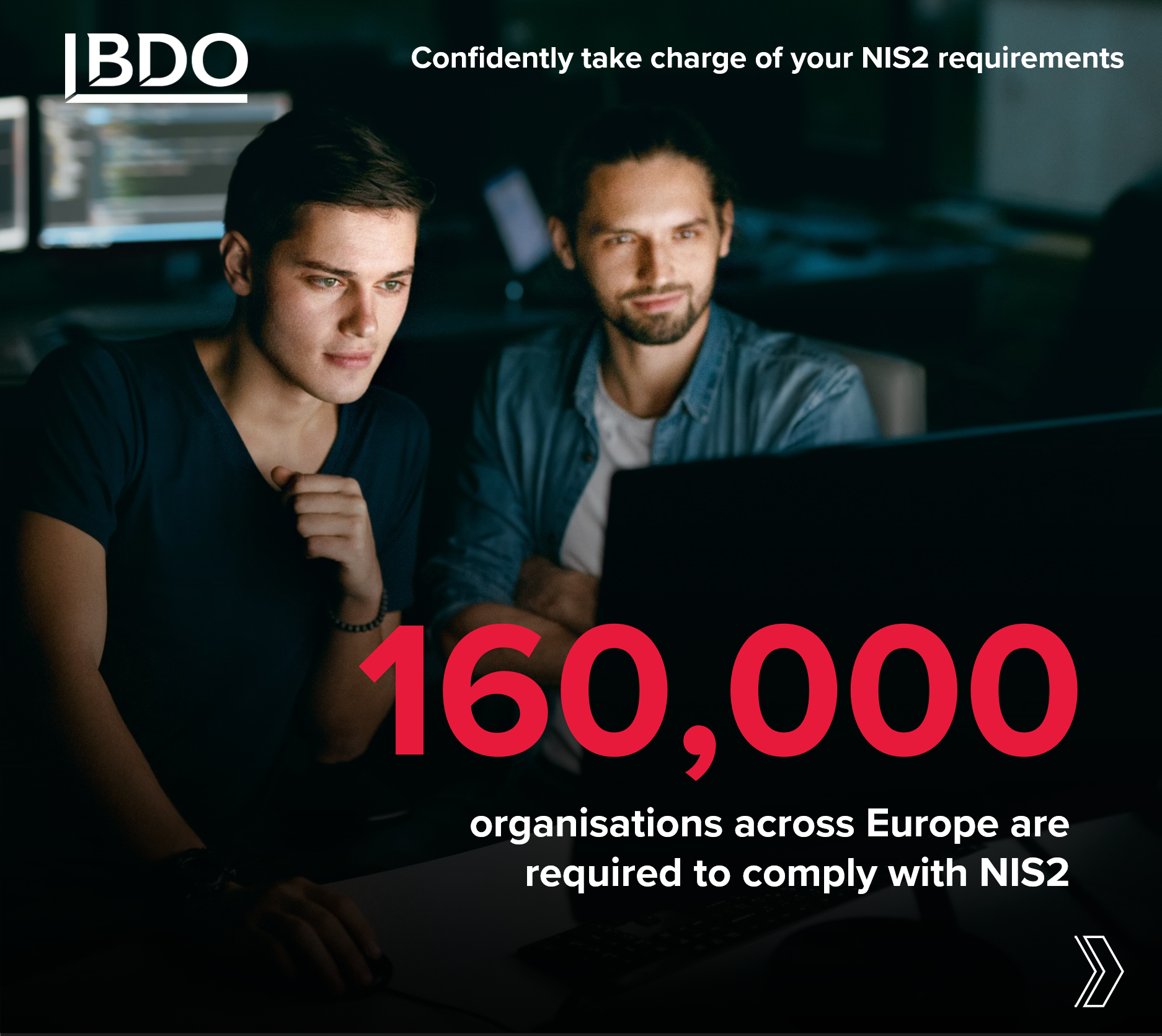
Ivan Spiteri



What is it for?
The NIS2 imposes security requirements that are grouped under duty of care, reporting obligation, and supervision, and are already relatively concrete before they are formalised in national legislation. These include, among others, the concrete lists of measures from Article 21 and the significant fines from Article 34 (4). Read more in the directive: EUR-Lex – 32022L2555 (europa.eu). In addition, there are a number of other notable elements such as security in the supply chain, responsibility of management bodies, and training obligations.
For whom does it apply?
Organisations that will fall under the new European directive Network and Information Security Directive 2 (NIS2) include energy companies, airlines, water companies, digital service providers, government agencies, and their suppliers. To check if your organisation falls under this directive, it is recommended that you consult information from your local government. If you have any questions, please feel free to contact us for expert advice and support.
Which type of organisations does it impact?
The NIS2 directive is aimed at more types of companies and organisations than the first NIS directive. This means that there are now more public and private organisations that must comply with the rules.
The organisations now covered by the NIS2 directive include:
These are large organisations that are active in a sector from Annex I of the NIS2 directive.
An organisation is considered large based on the following criteria:
These are medium-sized organisations that are active in a sector from Annex I and medium and large organisations that are active in a sector from Annex II.
An organisation is considered medium-sized based on the following criteria:
